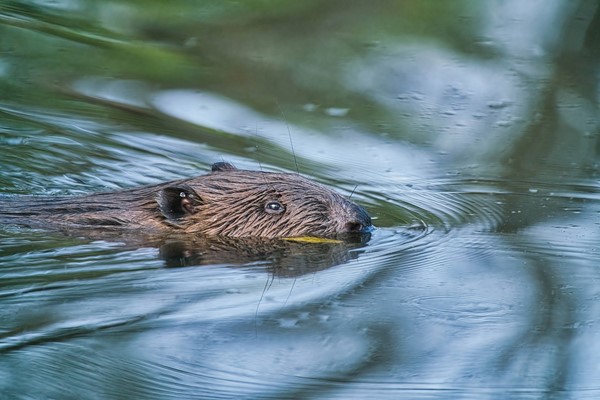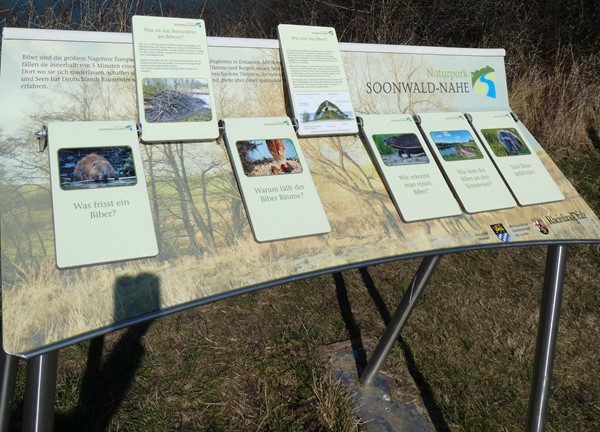The beaver in the Soonwald-Nahe Nature Park

The beaver is a native species that was almost extinct in Central Europe in the 19th century due to heavy hunting. There were no more occurrences in Rhineland-Palatinate. After the beaver was placed under strict protection nationally and throughout Europe and targeted reintroduction programmes were carried out in many federal states (e.g. Bavaria, Hesse and Saarland), it has returned and continues to spread. Since 2003, the beaver has again been recorded in the area of the Soonwald-Nahe Nature Park.
With its way of life, the beaver is of great importance for nature conservation. When the water depth is less than 50 cm, it dams up the water with logs, branches, twigs and mud. This creates many different habitats for plants and animals, greatly increasing the total number of species in the beaver area. In addition, the areas created by the beaver actively contribute to flood protection. When it rains, more water remains in the area for a longer time. This reduces flood peaks during heavy precipitation and promotes groundwater recharge. Apart from its importance for the ecosystem, the natural areas created by the beaver enrich the landscape and create wild recreational landscapes.
 To provide information about the beaver and its way of life, an interactive station was set up at Lake Simmern in Simmern. Under folding panels, information is provided on questions such as "How does a beaver live" or "How did the beaver come to Lake Simmern". Nearby are several dams of the beaver called beaver dams.
To provide information about the beaver and its way of life, an interactive station was set up at Lake Simmern in Simmern. Under folding panels, information is provided on questions such as "How does a beaver live" or "How did the beaver come to Lake Simmern". Nearby are several dams of the beaver called beaver dams.
A leaflet supplements the information on the beaver and is available from the nature park and its distribution partners (e.g. tourist information).
In cooperation with the town of Simmern (Hunsrück Museum) and the Trägerverein Simmerbachaue e.V., the Soonwald-Nahe Nature Park has developed a cultural and historical circular trail in Simmern. It leads along the Simmerbachaue and the Simmersee directly past a beaver dam.You can download the leaflets here:
- The beaver in the nature park
- Simmerbachaue – History – Nature – Cultur (cultural-historical circular trail in Simmern)
Further informationen:

